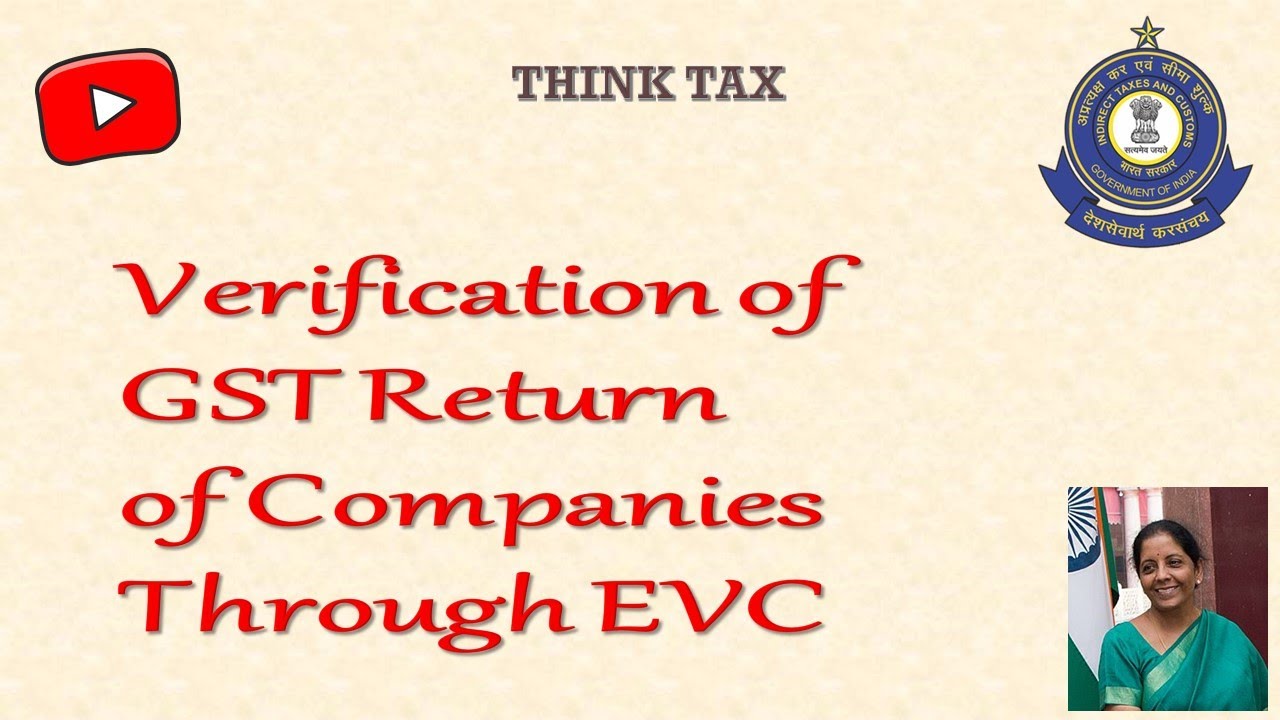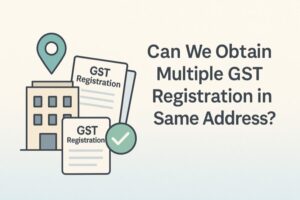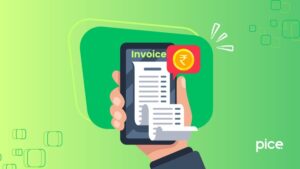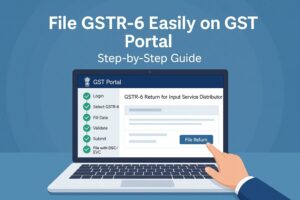A Comprehensive Guide of EVC in GST
- 13 Jan 25
- 6 mins

A Comprehensive Guide of EVC in GST
Key Takeaways
- EVC streamlines GST compliance by replacing physical and digital signatures.
- It ensures secure authentication via OTPs sent to registered mobile numbers.
- Taxpayers can generate EVC through online methods or bank ATMs.
- EVC simplifies tasks like GST registration, return filing, and payment processing.
- Compared to e-sign and DSC, EVC is more accessible and user-friendly.
Authenticating transactions is a key aspect of business compliance. To simplify this process, the Goods and Services Tax Network (GSTN) has introduced an Electronic Verification Code (EVC). This authentication technique has transformed digital transactions, providing both enhanced security and ease of use. To learn more about EVC in GST, go through this blog.
What Is EVC (Electronic Verification Code)?
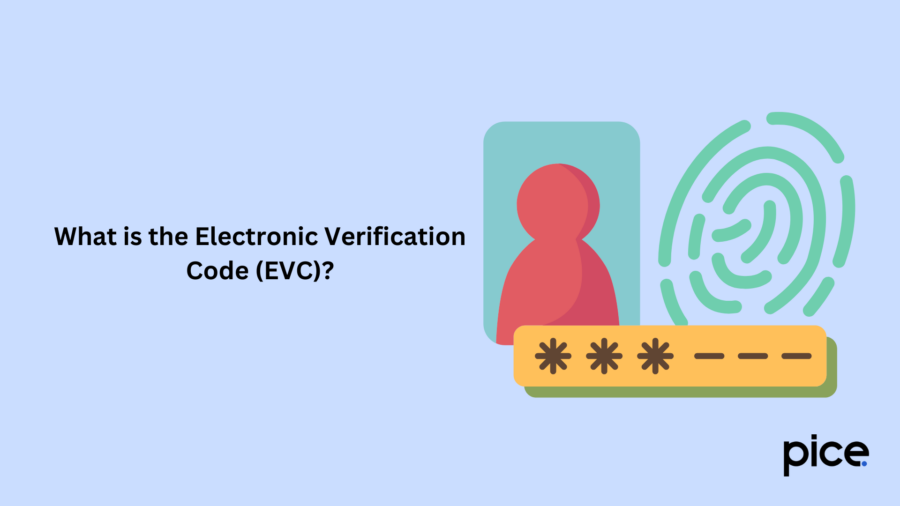
In India, the Electronic Verification Code (EVC) is an electronic method used to authenticate GST-related transactions. This 10-digit alphanumeric code is generated and sent to the taxpayer’s registered mobile number. EVC is utilised for verifying various GST activities such as registration, return filing, and payment processing.
The government introduced the EVC system to simplify GST compliance for taxpayers. By eliminating the need for handwritten signatures or a Digital Signature Certificate (DSC) at the time of registration, this method streamlines the authentication procedure and makes it more accessible.
The EVC is sent as a One-Time Password (OTP) to the registered mobile number of the authorised signatory which remains valid for 72 hours. Taxpayers need to generate the code and input it on the GST portal to complete the verification. Once the EVC is entered, the transaction is considered verified, enabling the taxpayer to proceed with further steps.
EVC is considered a secure authentication technique since the code is sent to the registered mobile number linked to the taxpayer’s Aadhaar or PAN. This makes it difficult for the fraudster or an impostor to access the account and because the PIN is highly secret only the intended person will proceed with the transaction.
What Are the Documents Necessary to Enable the EVC Authentication Services?
The following are the documents required for EVC authentication services:
- Aadhaar card or PAN card
- Registered mobile number
- Email address
How to Generate EVC?
You need to follow the steps mentioned below to generate an EVC online via the income tax portal:
Log in to the e-Filing Portal
Access the e-filing portal and log in to your account using your user credentials.
Navigate to the Generate EVC Option
When logged in, click on the dashboard. In the Services list, choose Generate EVC.
Select PAN or TAN
When on the ‘Generate EVC’ page select PAN or TAN and then tap the ‘Continue’ button.
Methods to Generate EVC
You can generate an EVC using any of the following methods:
- Net Banking
- Bank Account
- Demat Account
- Bank ATM
Generating EVC via Net Banking
- Opt for the service through net banking and select the bank from the available ones.
- Log in to your bank account through net banking and find the option to access the e-filing portal.
- On your dashboard, go to Services and sub-select Generate EVC.
- The EVC will be sent to your registered mobile number and email ID.
Generating EVC via Bank Account
- On the 'Generate EVC' page, select 'Through Bank Account' and tap 'Continue'.
- Once your bank verifies your details, you will receive the EVC on your registered mobile number and email ID.
Generating EVC via Demat Account
- Select the 'Through Demat Account' option and click 'Continue'.
- After verification by CDSL/NSDL, the EVC will be sent to your registered mobile number and email ID.
Generating EVC Offline Using an ATM
You can also generate an EVC by visiting your nearest bank ATM. Insert your card, enter the PIN and select the option 'Generate EVC for Income Tax Filing'. The EVC will be sent to your registered mobile number and email ID.
By following these steps, you can generate an EVC easily for secure authentication on the e-filing portal.
What Is the Difference Between EVC, e-sign and DSC on the GST Portal?
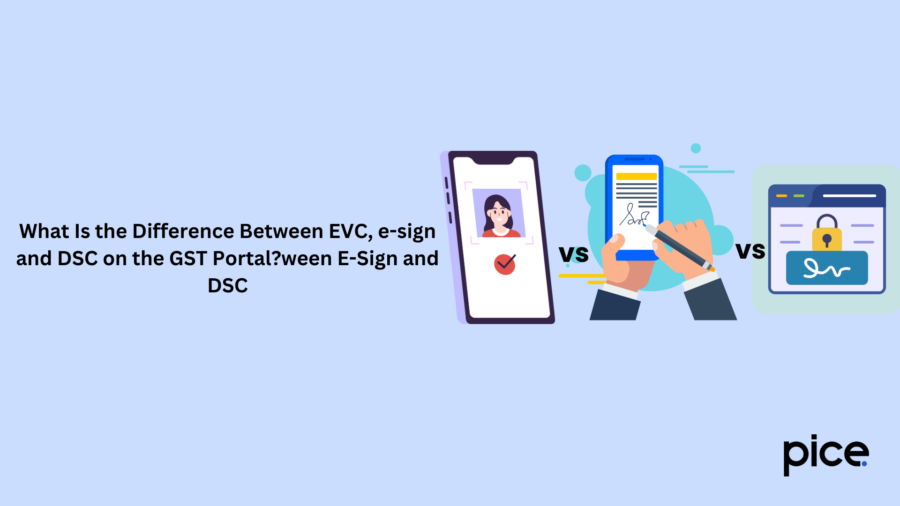
The table below explains the differences between EVC, e-sign, and DSC on the GST portal:
| Authentication Method | Description |
| EVC (Electronic Verification Code) | A one-time password (OTP) sent to the authorised signatory's registered mobile number during GST-related processes. It is generated at the time of authentication or registration on the GST portal. |
| e-Sign | An electronic signature service is available to Aadhaar cardholders. The e-sign facility is digitally applied to documents using an OTP sent to the mobile number linked to the Aadhaar. |
| DSC (Digital Signature Certificate) | A digital certificate issued by authorised certifying authorities. The GST portal supports PAN-based Class II and Class III DSCs at GST registration for the electronic signing of documents. |
Conclusion
EVC in GST simplifies the user authentication process by providing a secure and efficient way to verify GST-related transactions. By using an OTP sent to the registered mobile number, taxpayers can easily complete tasks like registration, GST return filing, and payment processing without requiring physical signatures or DSCs. This ensures both convenience and security in GST compliance.
💡If you want to streamline your payment and make GST payments, consider using the PICE App. Explore the PICE App today and take your business to new heights.







